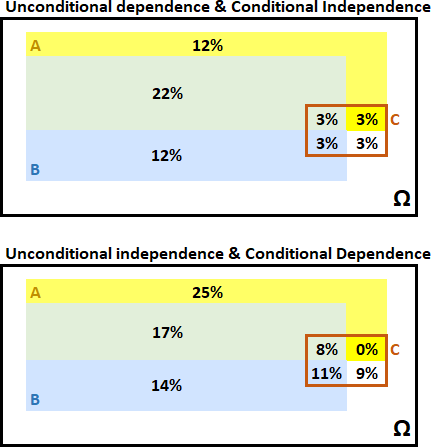Raj Sachdeva
New Member
@David Harper CFA FRM , can you please share an example of the below case if possible?
Events can be conditionally independent yet unconditionally dependent. Events can be conditionally dependent, yet independent! [Chapter 1: Fundamentals of Probability, Study Notes, Pg. 5]
It will be easy to remember this with an example.
Thanks,
Raj
Events can be conditionally independent yet unconditionally dependent. Events can be conditionally dependent, yet independent! [Chapter 1: Fundamentals of Probability, Study Notes, Pg. 5]
It will be easy to remember this with an example.
Thanks,
Raj


